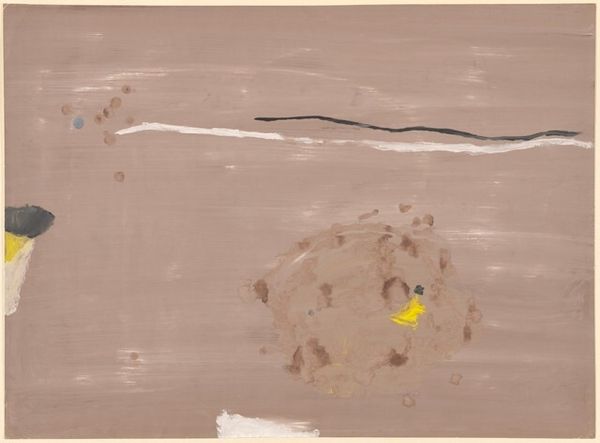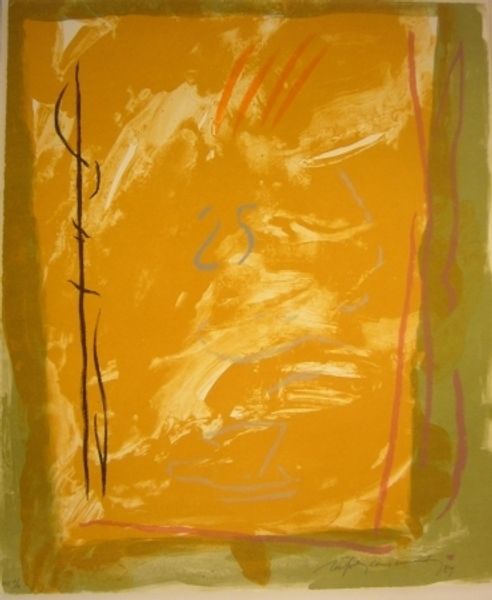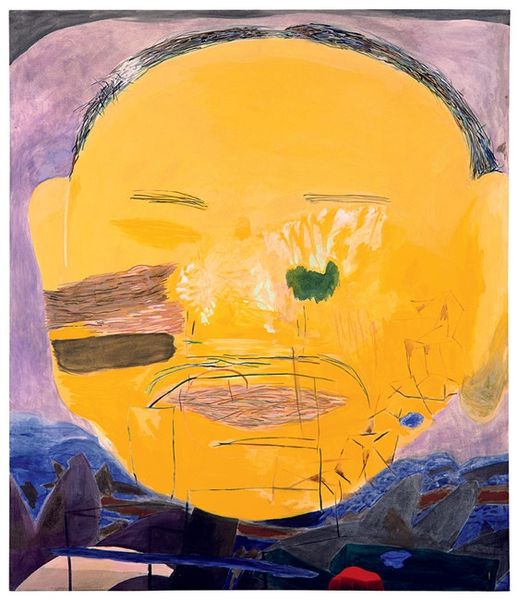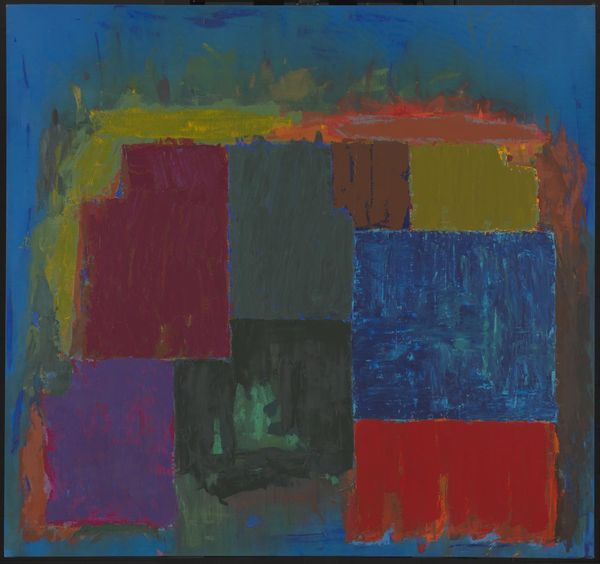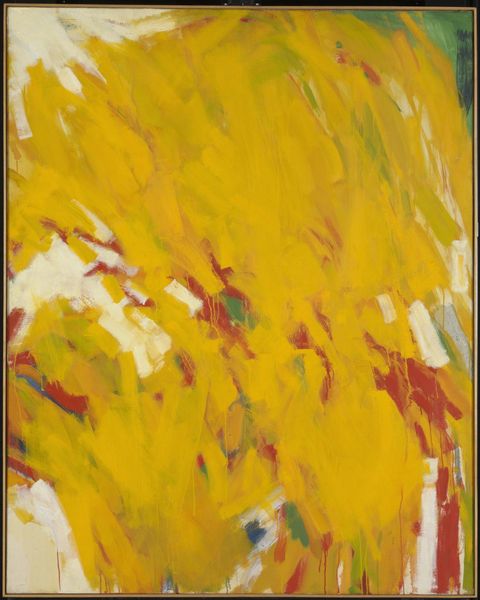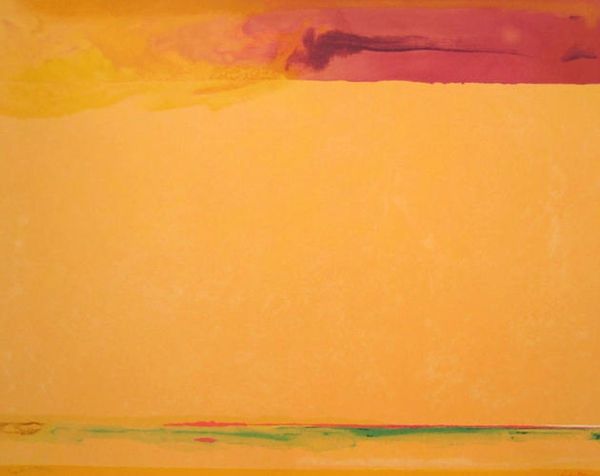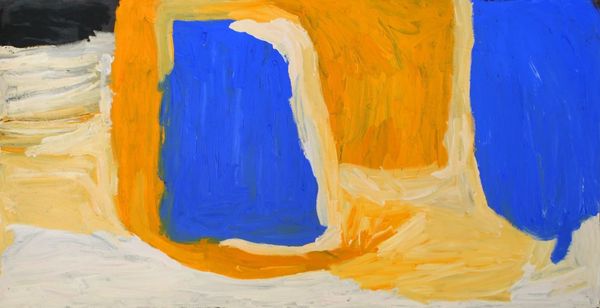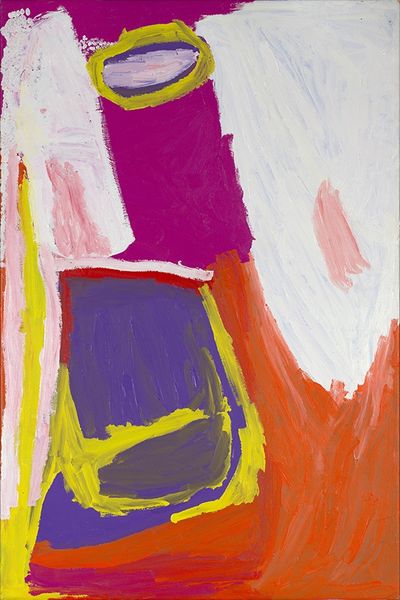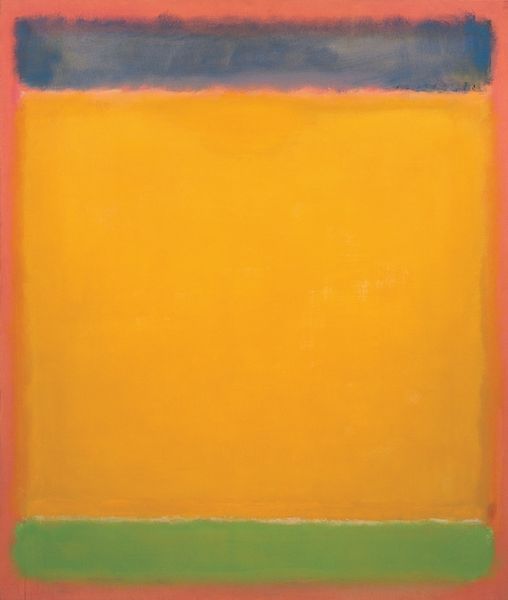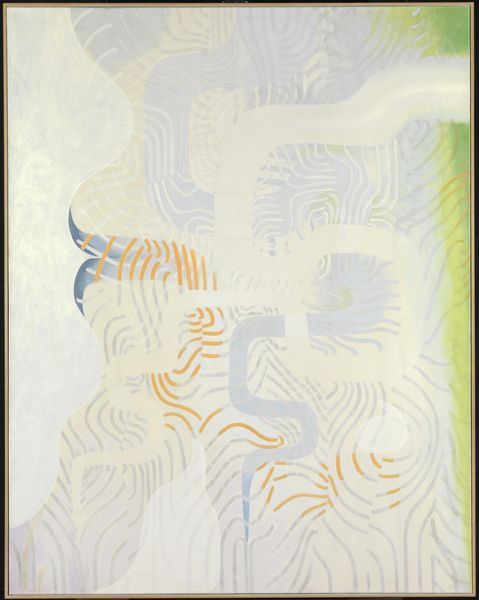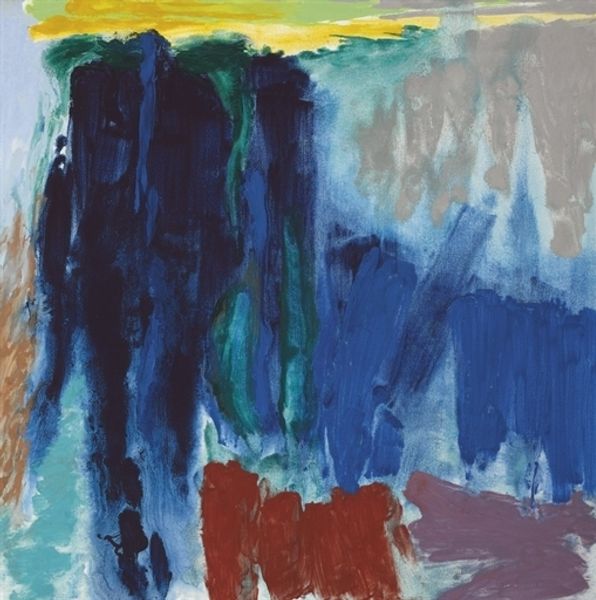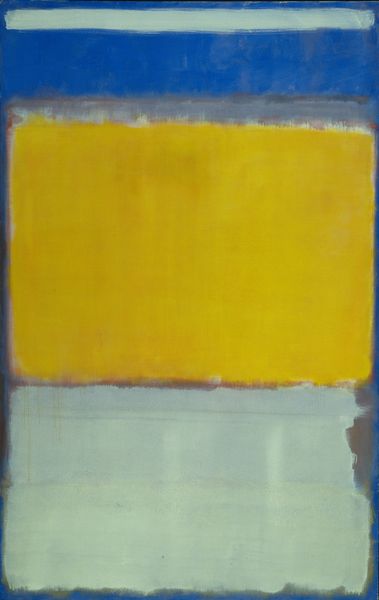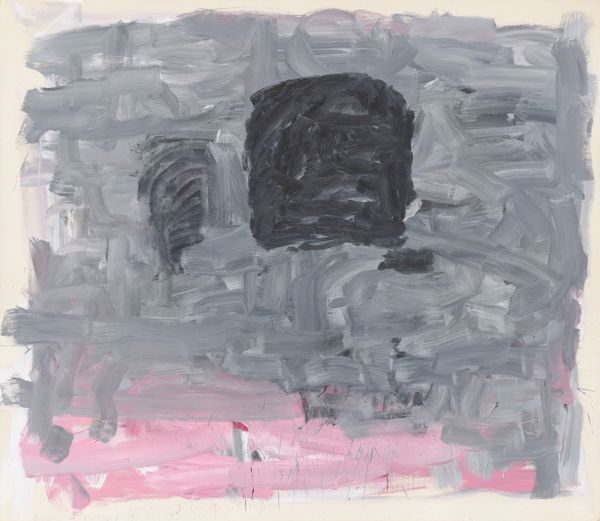
Dimensions: support: 750 x 960 mm
Copyright: © Trevor Bell | CC-BY-NC-ND 4.0 DEED, Photo: Tate
Editor: Trevor Bell’s "Dust Image" presents these hazy, horizontal ochre strokes. It feels so simple and elemental, almost like a landscape obscured by fog. What visual cues stand out to you? Curator: I see an echo of ancient ziggurats, those stepped pyramids of Mesopotamia. The horizontal layers could symbolize humanity's aspiration to reach the heavens, while the "dust" speaks to the inevitable decay and impermanence of such grand ambitions. Editor: So, it's like a reminder of the cycle of building and ruin? Curator: Precisely. The choice of ochre, an earth pigment, further reinforces the connection to the land, to history, to the very stuff of which civilizations are made and to which they return. The violet line, so thin, so fragile, almost seems to signify hope. Editor: That's fascinating; I didn't consider it in such a cyclical way. I'll definitely see "Dust Image" differently now. Curator: Consider how such symbols allow the past to speak to us anew.
Comments
Join the conversation
Join millions of artists and users on Artera today and experience the ultimate creative platform.
tate 7 months ago
⋮
Dust Image 1988 is one of eight abstract works on paper in Tate’s collection that were created by the English artist Trevor Bell between 1988 and 2007 (Tate T13397–8, T13400–5). In it, a block of horizontal brushstrokes in a dirty gold colour forms a rectangle at the centre of the paper. This is set against a background of light grey-green, rendered in multi-directional strokes. At the lower centre of the rectangle is a rounded form in the same shade of gold, but painted more densely, with a thin purple line at its base.
